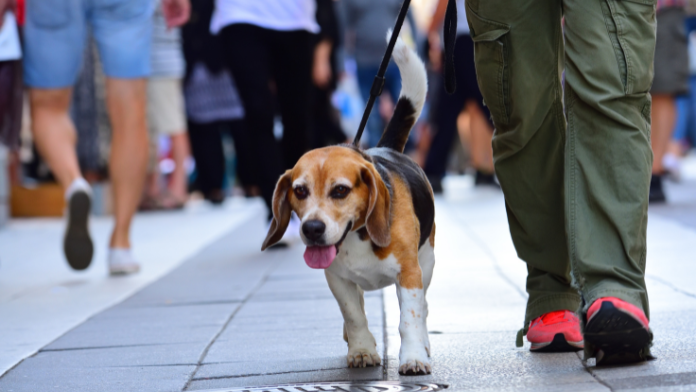Smog is a major concern for those who live in cities and beyond. A problem that also affects our pets. In particular, dogs are exposed to a number of risks because they breathe, touch and interact at ground level, where more harmful substances are deposited. Here’s how to preserve the health of our pets.
What are the more dangerous pollutants?
“The dog is particularly exposed to air pollution,” he explains Giuliano Pellegrini, veterinary doctor from Ca’ Zampa, «because he lives, moves, breathes and walks almost close to the ground where the concentration of pollutants for reasons of density is greater. The cat is more affected by the greater presence of harmful substances present in our homes, including dust and substances coming from outside but also by the use we make of products, such as detergents or by passive smoking.”
The effects of smog on animals
Irritant action on skin and mucous membranes
Depending on the products released, the organs and systems affected are different. The first target is definitely the skin, the barrier organ par excellence: where dermatitis and irritation can develop. «The simplest chemical substances such as nitrogen and sulfur oxides have an irritating and aggressive activity for the skin and all the mucous membranes, in particular the ocular and respiratory ones, causing inflammation (conjunctivitis, laryngitis, rhinitis and also in the deeper parts up to the bronchi and lungs). In the long term they can have mutagenic action up to generating tumors».
Lung inflammation
A special mention goes to the fine particles that are released from the combustion of fuels or from the pulverization of tires or the asphalt itself: they are a mixture of hydrocarbons and minerals which, due to their size, can reach the alveoli where they deposit and are incorporated by scavenger cells which carry them into the septa of the lung where they remain trapped. At that location cause chronic lung inflammation (pneumoconiosis) which over time can lead to loss of respiratory function.
Damage to the digestive system
We must not forget that even the chemicals used for the house cleaning and secondhand smoke pose threats to the health of dogs and cats. «In particular, the chemicals present in detergents, disinfectants and perfumes can cause damage to the digestive system. The reason? The dog licks its paws and fur, ingesting harmful substances. In cats, fur licking is the main way of contact with the digestive system”, continues Dr. Pellegrini.
Smog and animals: how can the problem be stemmed?
Hair hygiene and dust removal with special solutions (soaked wipes or foams, or simply with water acidulated with vinegar) and with regular toileting with non-aggressive and hydrating products.
Intake of foods and supplements rich in antioxidants to reduce cellular damage.
Regular veterinary visits with regard to the most exposed target organs, integrated with ad hoc collateral tests, such as blood counts and biochemical tests and, in the case of the respiratory system, chest X-ray tests, up to performing second level tests such as CT or endoscopy. For those who wish, until March 31st a prevention campaign is underway which includes check-ups at list price in Ca’ Zampa Clinics.
Smog and animals: the rules for a healthy walk
Finally, as far as walking is concerned, it is possible to take measures to make people breathe less smog. «We should avoid areas with more traffic: let’s take into account that they breathe at a lower level than us, at the height of car exhaust pipes and where the dust, due to its tendency to fall to the ground, is more concentrated. So prefer parks and gardens during off-peak hours if possible».
Apps to control air quality
There are apps – such as that of the Lombardy Region (ARPA) – on distribution and zoning of dust and air quality with the concentration of pollutants (not only dust but also benzene, sulfur and nitrogen oxides which are no less dangerous).
Sun protection for those with short or white hair
Going into the warm season, there is extra caution to be taken when planning a walk with your pet. Short-haired or white-colored dogs and cats they must avoid exposure during the hours of the day when the sun’s rays are most harmful or have particular conditions protections. In addition to having repercussions on physical health, sun rays also have consequences on an emotional level: as established by Harvard University, dogs become more aggressive on hot and polluted days.
